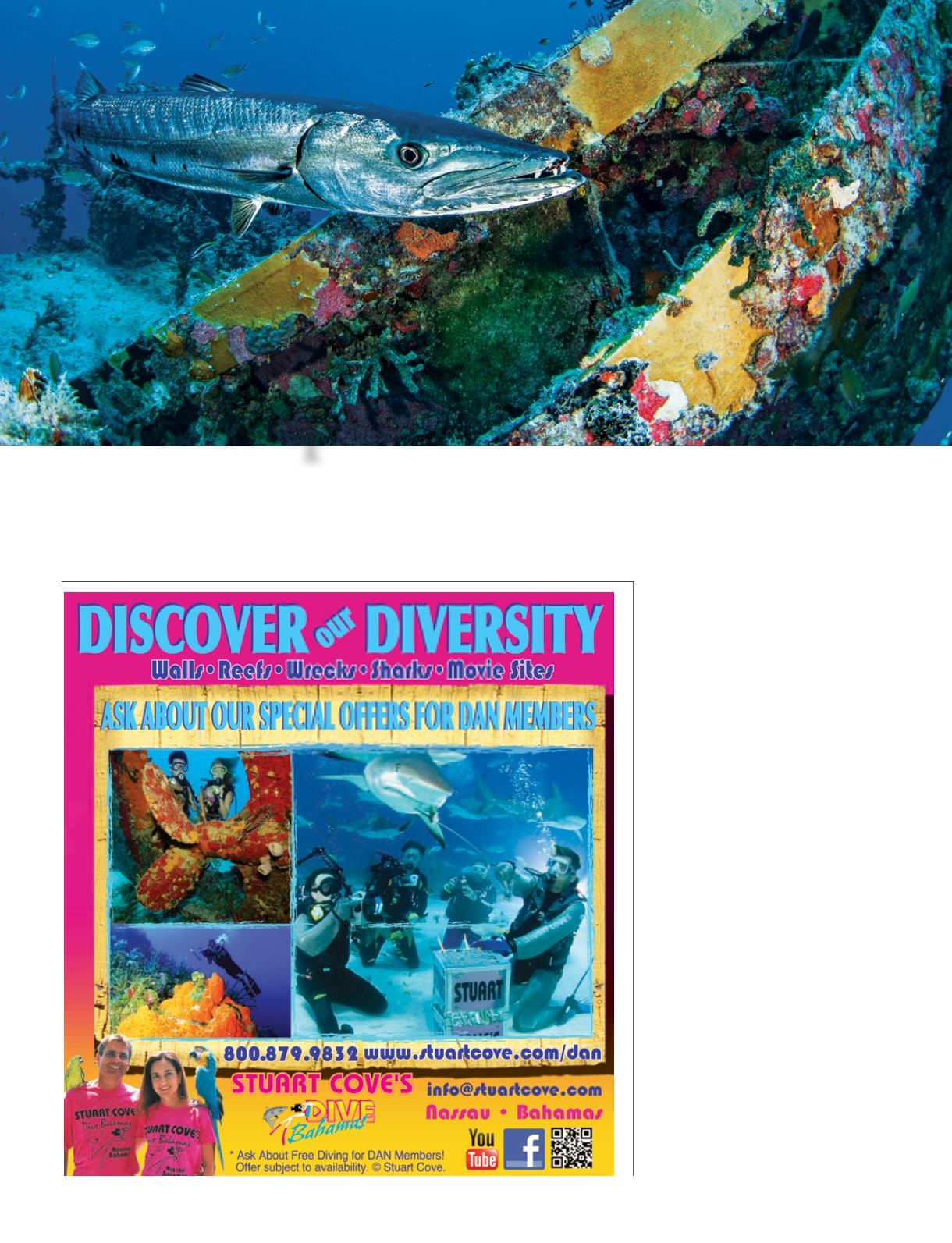
DIVE SLATE
//
22
|
FALL 2013
Caption to go here. Caption to go here.
discussion of the liabilities and
benefits of artificial reefs.
In 2002 the USS Spiegel Grove was
placed on the seafloor of the Florida
Keys National Marine Sanctuary
about 6 miles east of Key Largo,
becoming (at the time) the world’s
largest intentionally sunk artificial
reef. Sitting in 130 feet of water, the
510-foot-long ship is now a mecca
for wreck divers the world over. The
wreck rested on its starboard side for
three years before it was fully righted
by storm surge during Hurricane
Dennis. This was the blank slate
that Reef Environmental Education
Foundation (REEF) had to work with
when it was commissioned to survey
the recruitment of life onto the
wreck. REEF’s surveys began prior
to the sinking to establish a baseline
of life on the sandy seafloor and
along nearby reefs. REEF continued
monitoring the Spiegel Grove for five
years after it was sunk.
Unsurprisingly to wreck-diving
enthusiasts the Spiegel Grove now
hosts an incredible diversity of
marine life. More than 144 species
The Evolution
of a Shipwreck
W
hat happens when 9,000 tons of steel hit a
sandy bottom less than a mile from a coral
reef in the nation’s preeminent marine
sanctuary? There’s a high probability of a
world-class dive site, which will enhance tourism. But what
about all the fish and invertebrates that make the wreck their
home? Where do they come from? Does the wreck alter the
concentration of native marine life on nearby natural reefs?
Are the fish on a wreck congregated and therefore easier to
catch? Important questions such as these are central to any
Tim Grollimund
A barracuda cruises past the
wheelhouse of the
USS Spiegel Grove.


